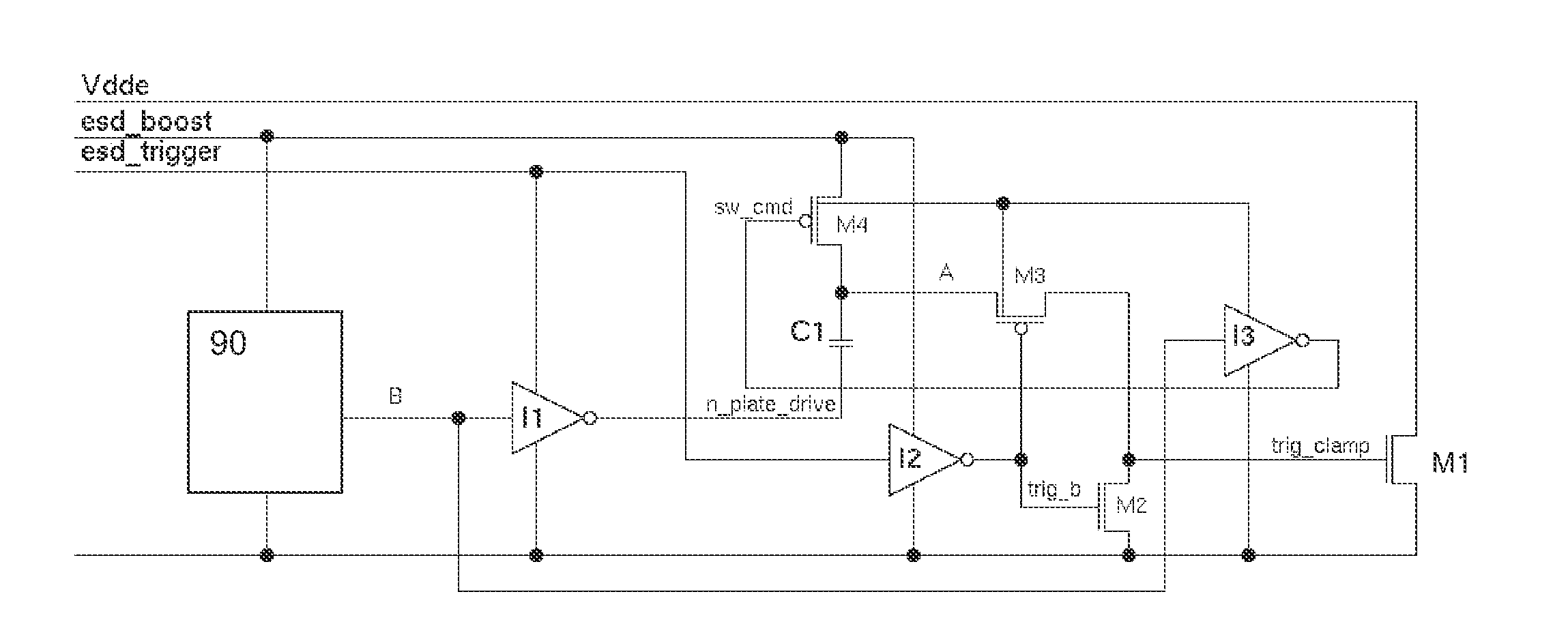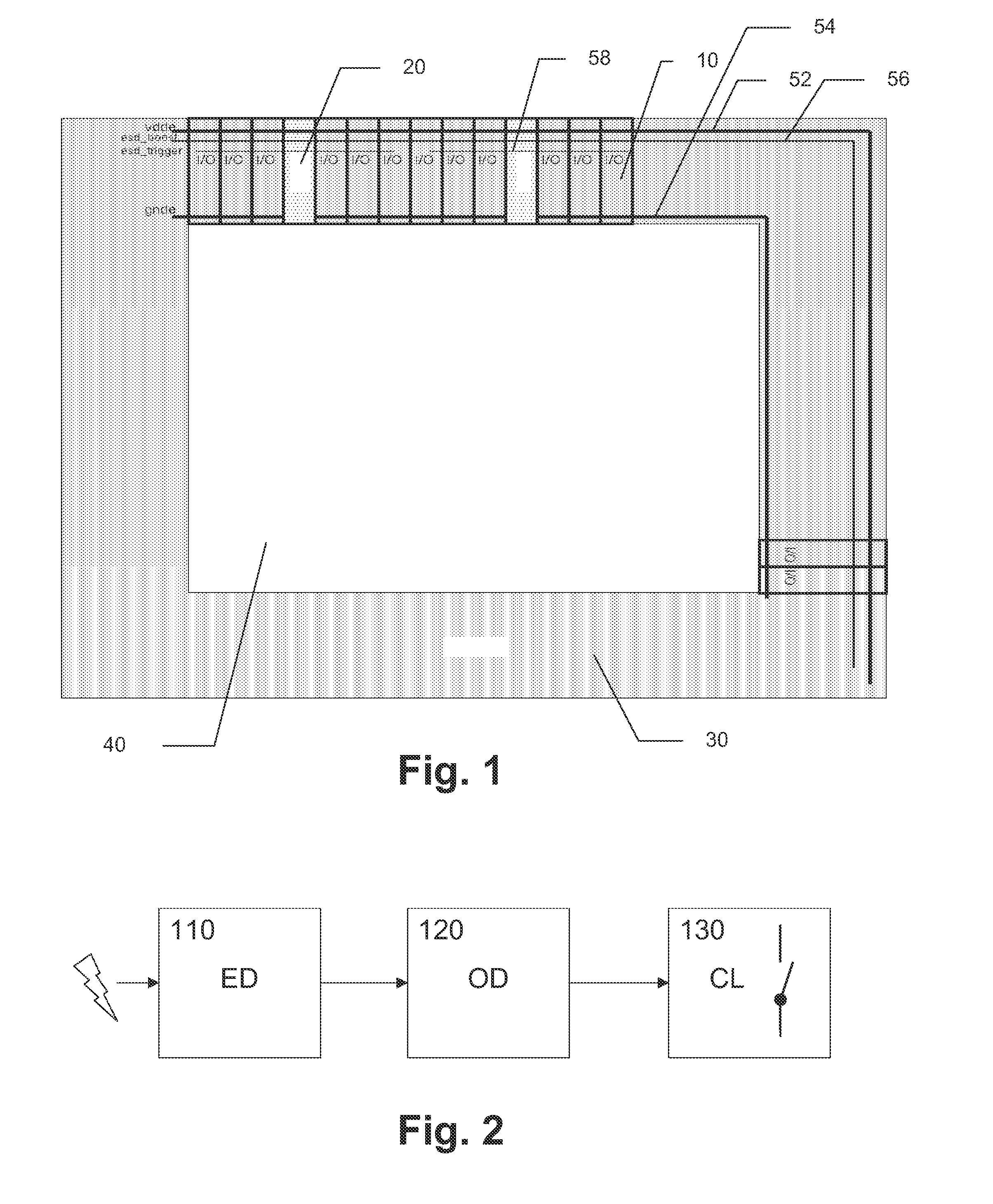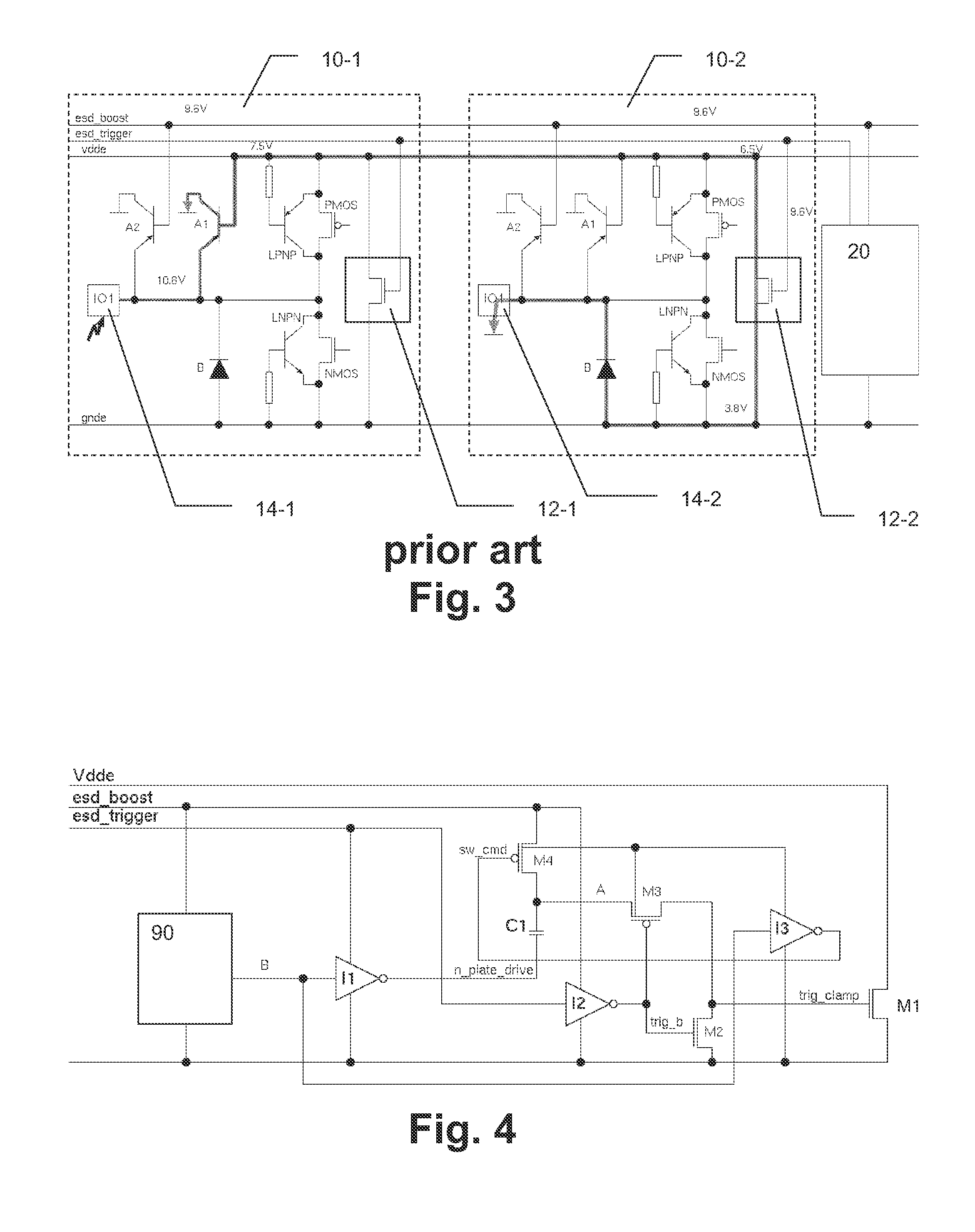Protection circuit with overdrive technique
a protection circuit and overdrive technology, applied in the direction of circuit arrangements, electrical equipment, arrangements responsive to excess voltage, etc., can solve the problem of low current leakage, and achieve the effect of reducing the size of the protection clamp
- Summary
- Abstract
- Description
- Claims
- Application Information
AI Technical Summary
Benefits of technology
Problems solved by technology
Method used
Image
Examples
Embodiment Construction
[0025]The embodiments of the present invention will now be described in greater detail based on a ESD protection circuit for rail-based distributed ESD networks.
[0026]FIG. 1 shows an example of an integrated circuit according to the embodiment with I / O ring 30 and protection rails esd_boost 56 and esd_trigger 58 as described initially. Between the IC core 40 and the outside world, I / O cells 10 are organized in a ring to form the I / O ring 30. The I / O cells 10 are responsible for supply voltage level shifting for noise immunity and at the same time for excessive-voltage protection of the IC core 40, and receive their supply voltage from a supply rail vdde 52 and a ground rail gnde 54. Distributed trigger circuits 20 for triggering ESD clamps of the I / O cells 10 are placed between some of the I / O cells 10.
[0027]It is known that for an MOS transistor the drain current is proportional to W / L (VGS−VT)2, wherein W and L denote the gate width and length, respectively, VT denotes the thresho...
PUM
 Login to View More
Login to View More Abstract
Description
Claims
Application Information
 Login to View More
Login to View More - R&D
- Intellectual Property
- Life Sciences
- Materials
- Tech Scout
- Unparalleled Data Quality
- Higher Quality Content
- 60% Fewer Hallucinations
Browse by: Latest US Patents, China's latest patents, Technical Efficacy Thesaurus, Application Domain, Technology Topic, Popular Technical Reports.
© 2025 PatSnap. All rights reserved.Legal|Privacy policy|Modern Slavery Act Transparency Statement|Sitemap|About US| Contact US: help@patsnap.com



